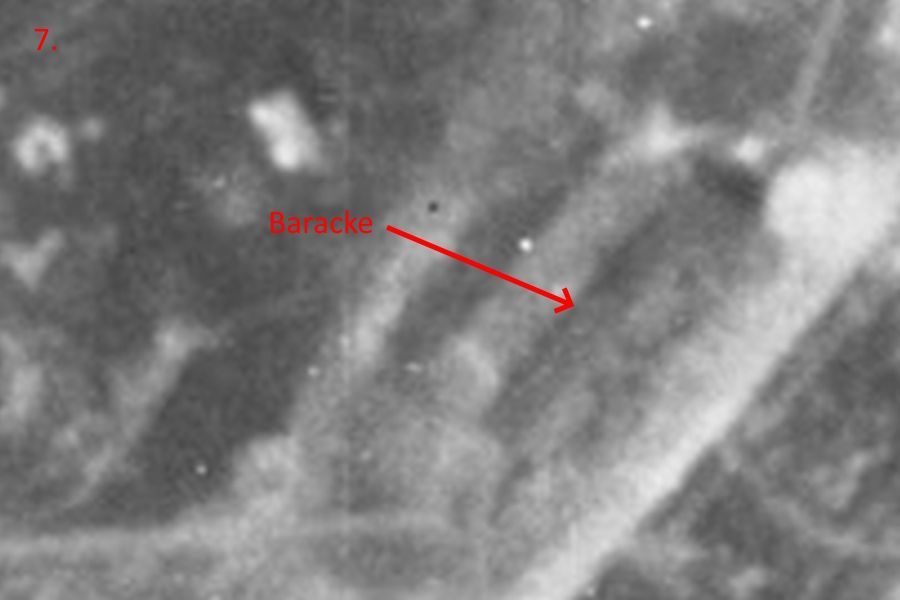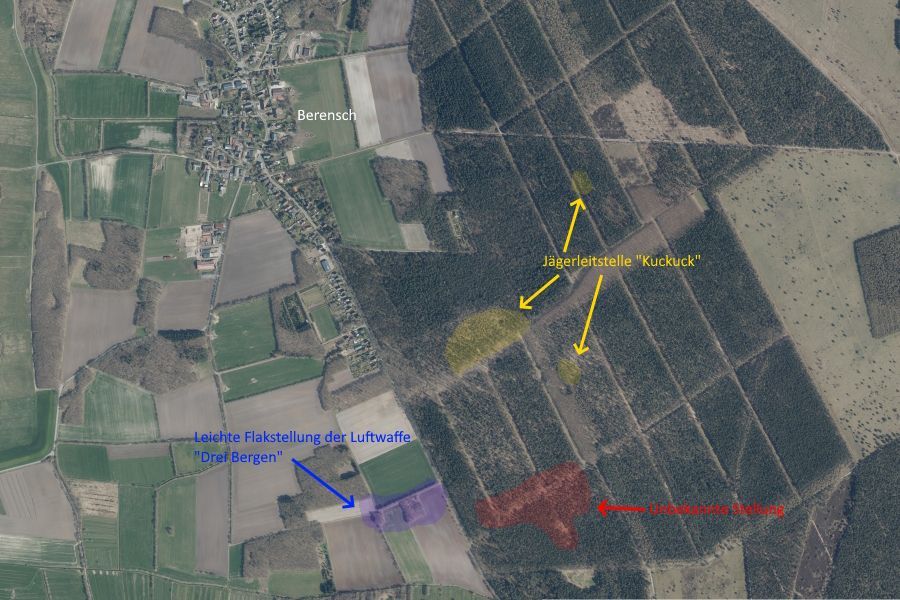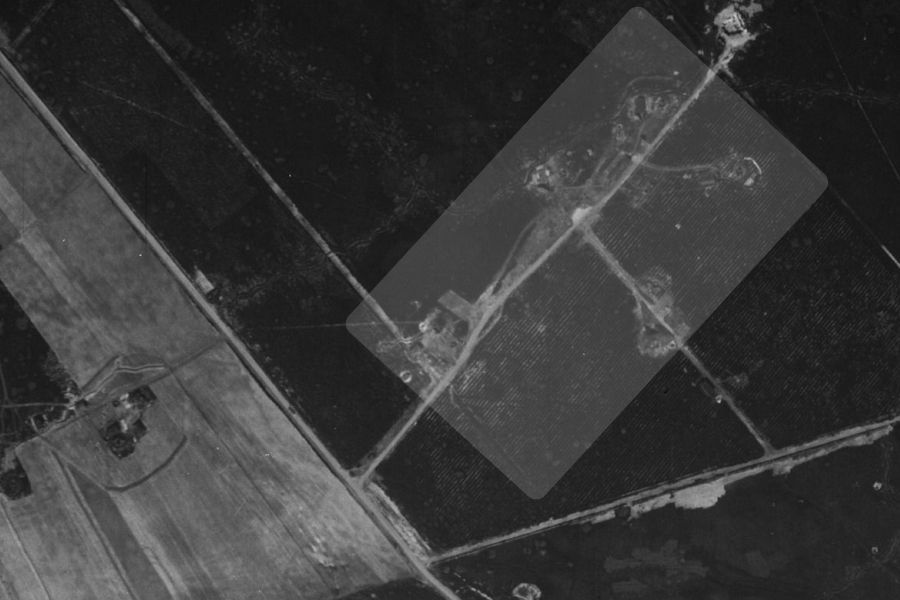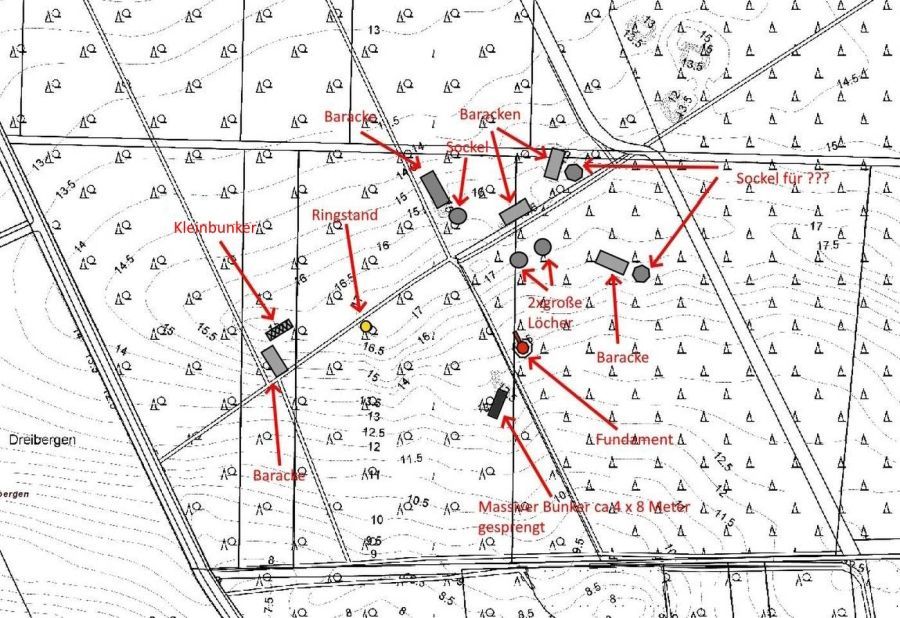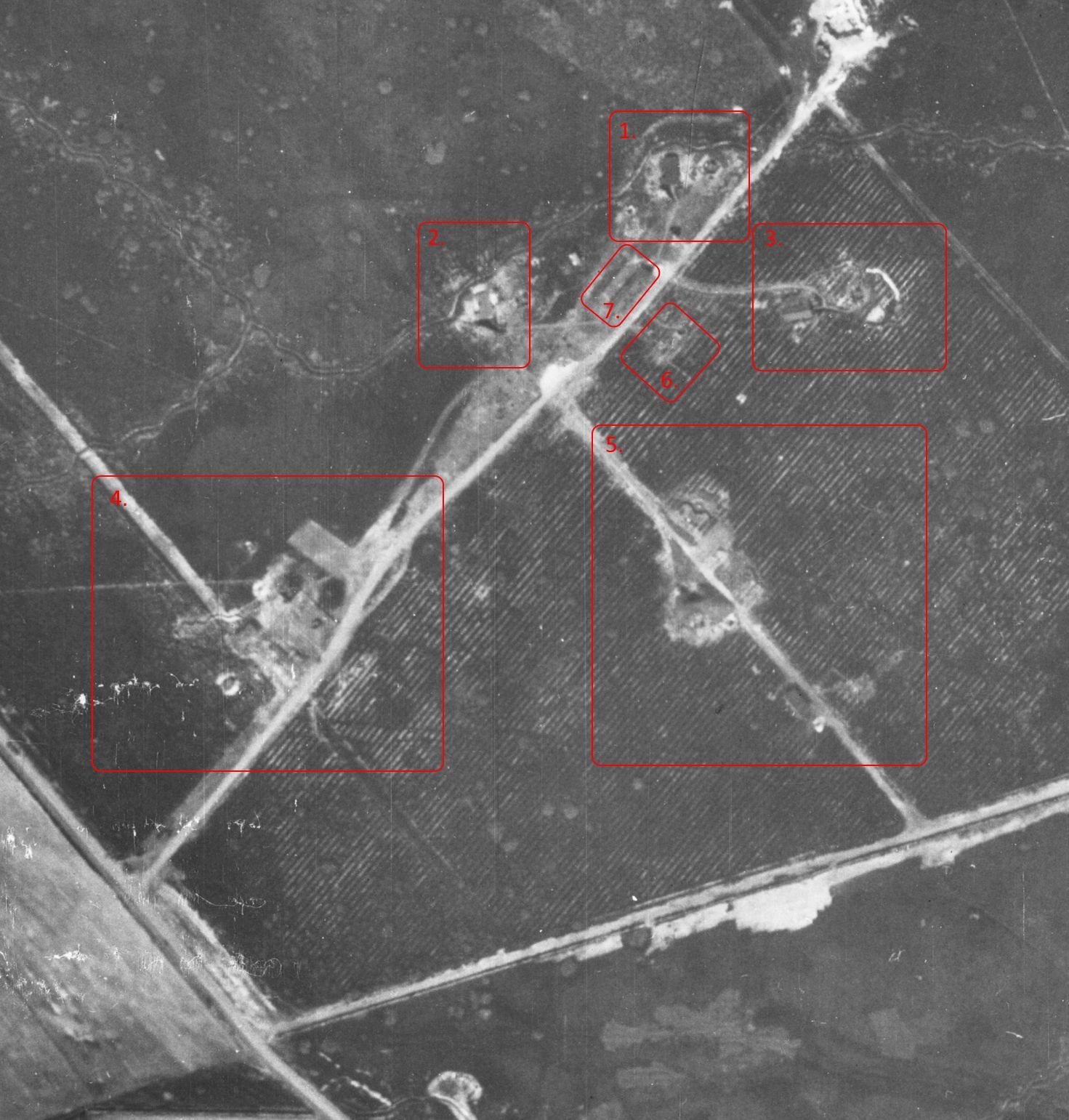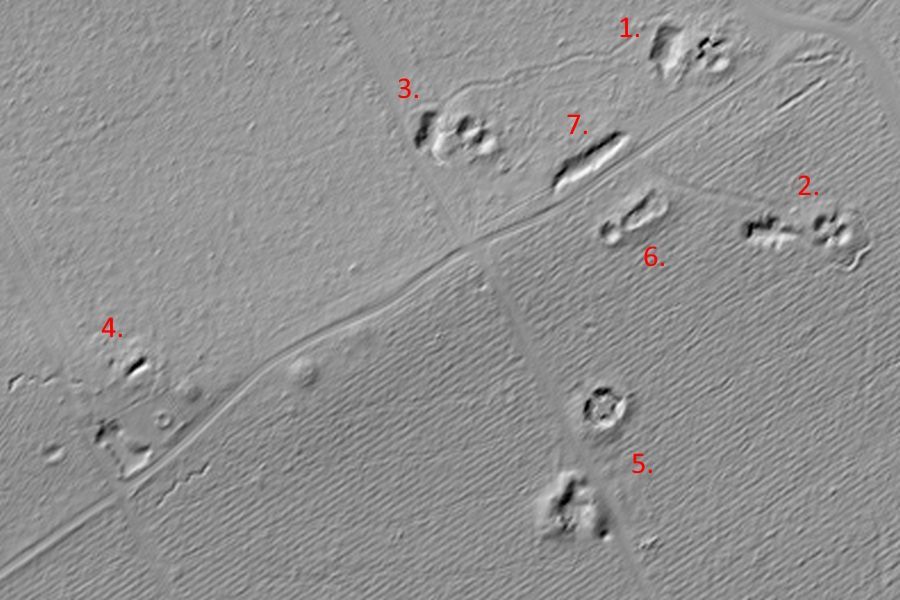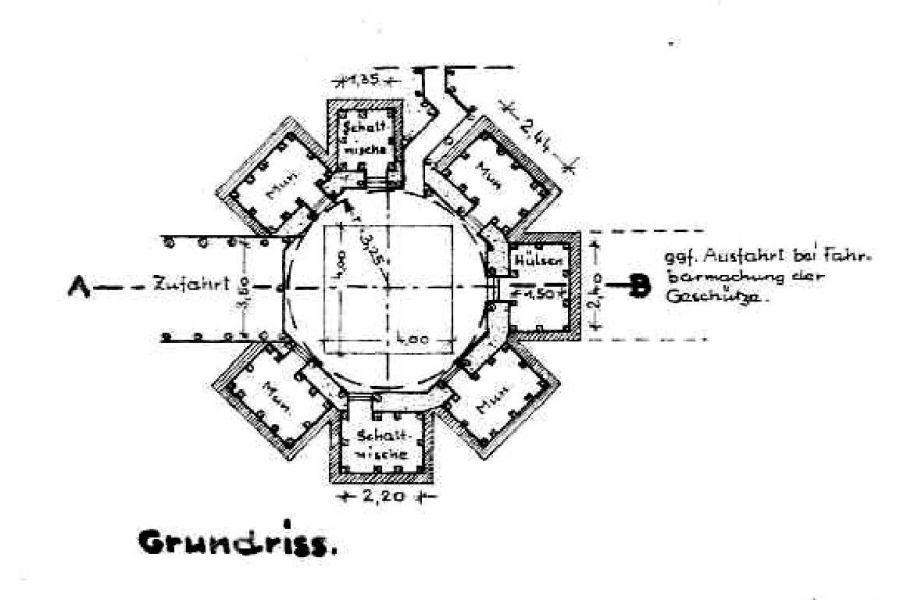
In the forest south of Berensch, below the former fighter control center (Kuckuck), there was another military installation from the war. Concrete gun beds, foundations, the remains of blown-up bunkers and barracks can still be found at this location today. However, this installation is not mentioned anywhere in the documents available to date, only references. After an on-site inspection, the following can be assessed. The position was originally built for a heavy anti-aircraft battery, in this case probably for the Luftwaffe as basic protection for the Nordholz air base. This is also supported by the reference to the relocation of the 6th/Reserve Flak Division 333 to exactly this area at the end of 1939. At first it was assumed that the battery would remain at this location for a longer period of time. Then, however, in April 1940, the sudden withdrawal came as a result of the invasion of Denmark and Norway. As a result, the relocated position apparently remained unoccupied for some time. Naval artillery positions were generally built differently than those of the Luftwaffe. Marienflak batteries were firmly anchored to their location and generally had a gun base encased in concrete. The cannons were initially open at the top, but later, during modernization, they were fitted with a turtle shell to protect against projectile splinters. The Luftwaffe and the Army, on the other hand, generally relied on mobility. Their guns were mostly mounted on a fold-out carriage, which was equipped with a quickly removable wheel system. There was no splinter protection at the top.The three gun emplacements on site are all identical in the shape of an octagon, cast from concrete and had an entrance and exit. It can therefore be assumed that they were designed for mobile heavy anti-aircraft guns, as used by the Luftwaffe and the Army. The cannon could be driven in, the wheels removed and the carriage completely folded out inside.The locations of the barracks there are striking; they all had a foundation made of red bricks that reached about 1.5 meters deep into the ground. Either the buildings had a basement or they were built so that the roof was only slightly above the ground. The reason for this could possibly have been the firing range of the anti-aircraft gun standing right next to it. The central foundation (No. 5) is also interesting. In contrast to the other three, it is completely made of red bricks and surrounded by a trench about 2 x 2 meters deep. There must have been something on it that wasn't a gun. The facility's ammunition bunker was probably located directly on the opposite side of the path. This was also blown up after the war, as evidenced by the massive concrete rubble in the area and the large crater. After the Luftwaffe withdrew, a naval anti-aircraft measuring device was supposedly stationed here for long-range aerial reconnaissance. According to contemporary witnesses from farmers in Berensch, there was supposed to have been a device there that resembled a coffee pot/coffee grinder and was also called that. Based on this description, it can be assumed that this was a so-called Freya radar device. These measuring devices came in different models and sizes depending on the type of use. Therefore, it is not possible to determine exactly which device was on site. Otherwise, there is no evidence of this position, only occasional references in military documents that there was anything there at all. After the war, the British occupying forces blew up almost all of the objects on site. Nevertheless, some of them can still be easily identified and identified today.
The only official reference to the Luftwaffe anti-aircraft position is this excerpt from the reports of the Naval Staff in Cuxhaven dated 6 March 1940.
At that time, the "Kuckuck" fighter control center was located south of Berensch. Next to it was the "Drei Berge" light anti-aircraft battery, which probably belonged to the heavy anti-aircraft battery in the Oxstedter Heide.
Object 1.
According to the assessment, this was a gun emplacement for a mobile heavy anti-aircraft gun. It had an entrance and exit on the right and left, as well as concrete niches in which the standby ammunition could be stored. The parapet was about a meter high. The emplacement also included a corresponding crew barracks nearby.
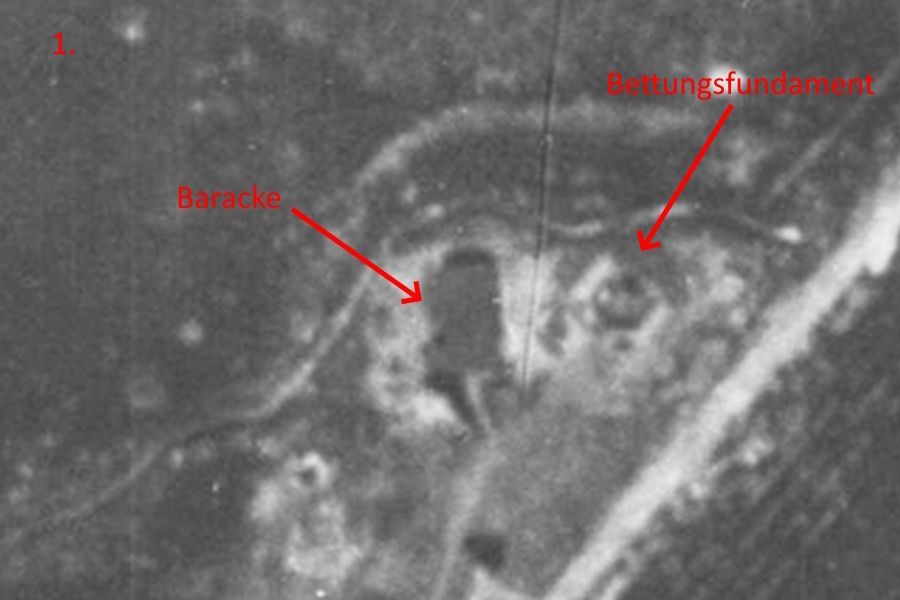
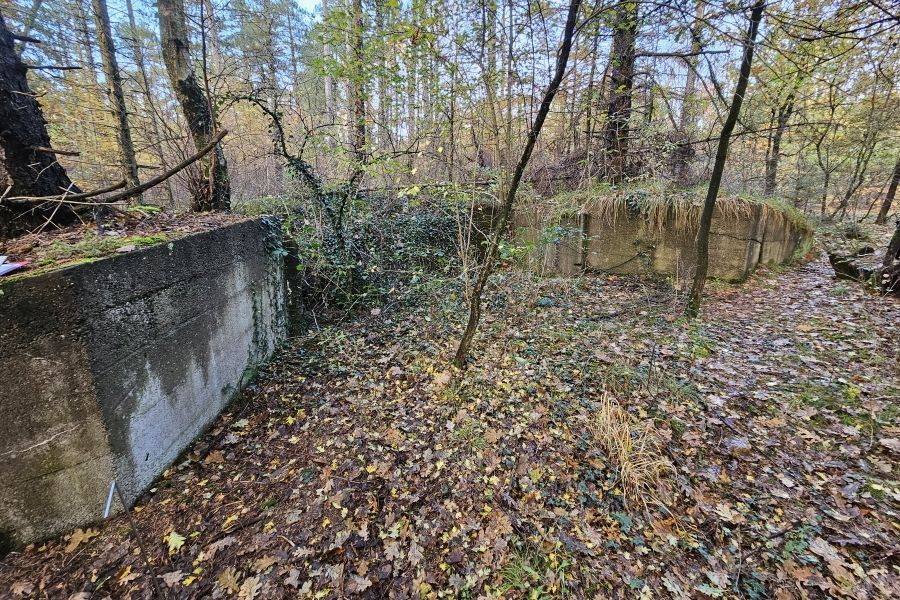
Niche for the standby ammunition.
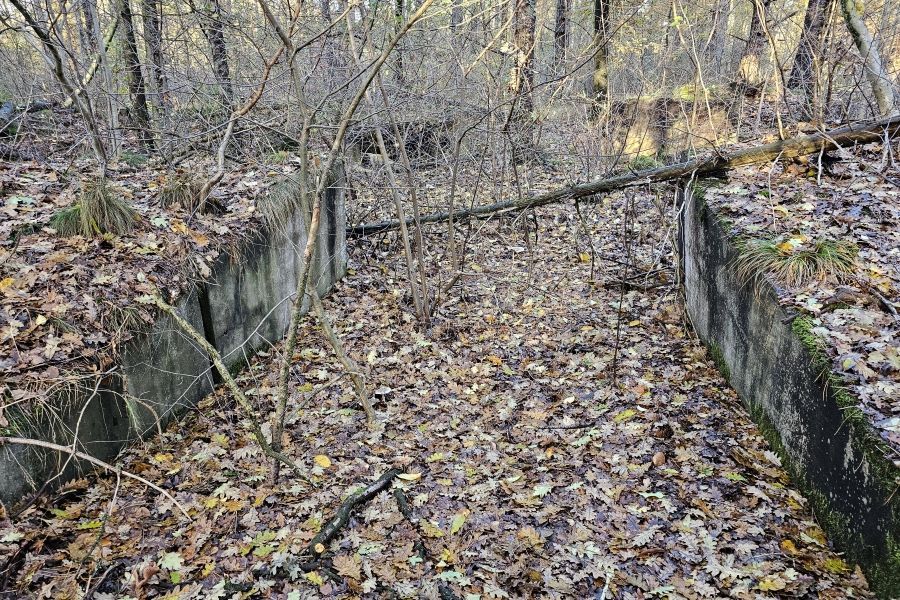
Entrance and exit on the opposite side
Object 2. (Like 1. and 3.)

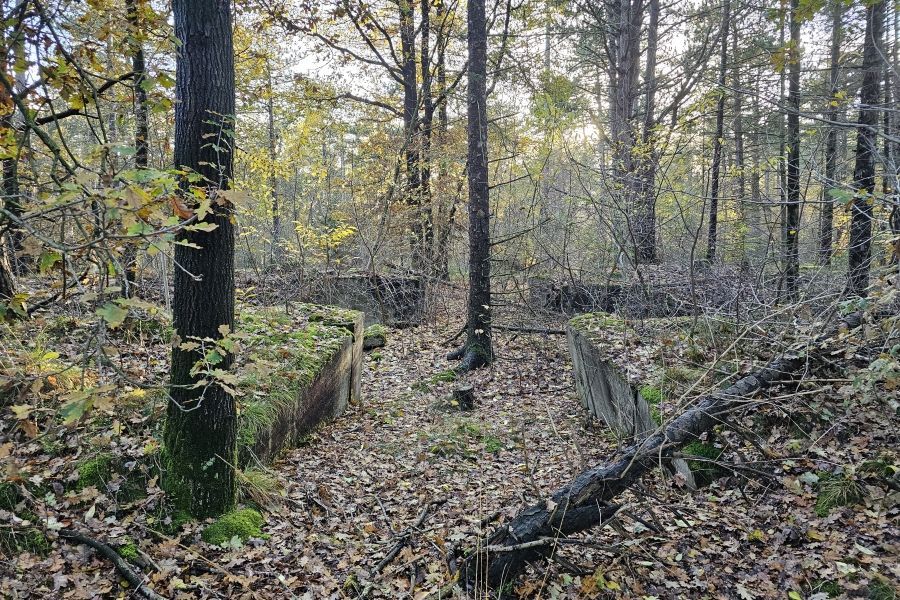
Object 3. (Like 1. and 2.)
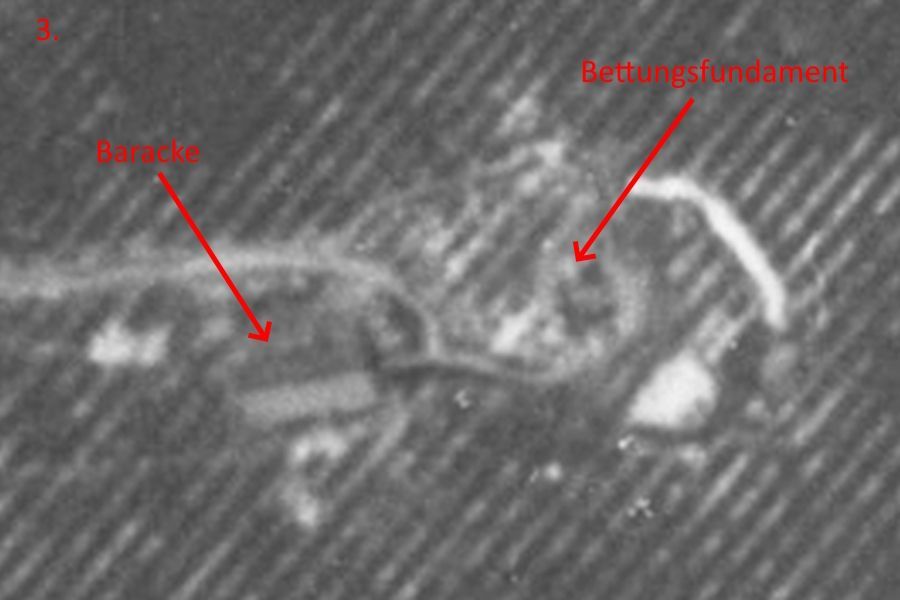

This bed was almost completely destroyed by an explosion.

Basic foundation of a barrack, above you can see the clinker wall, which in this case goes down about 1 - 1.5 meters.
Object 4.
This was a position of about 50 - 60 meters square. It is surrounded by a small wall that is still visible, on which a fence probably stood. On the side of the path, the area was dug out by about 50 cm. The reason for this is not known. There was apparently a barracks behind it. Of interest is a small bunker that was blown up by the English after the war. This caused the entire roof of the bunker to fly away and now allows a view of the interior. This is possibly a place where the FLUM (Freya measuring device) could have been and where the connecting cables ran into the bunker.
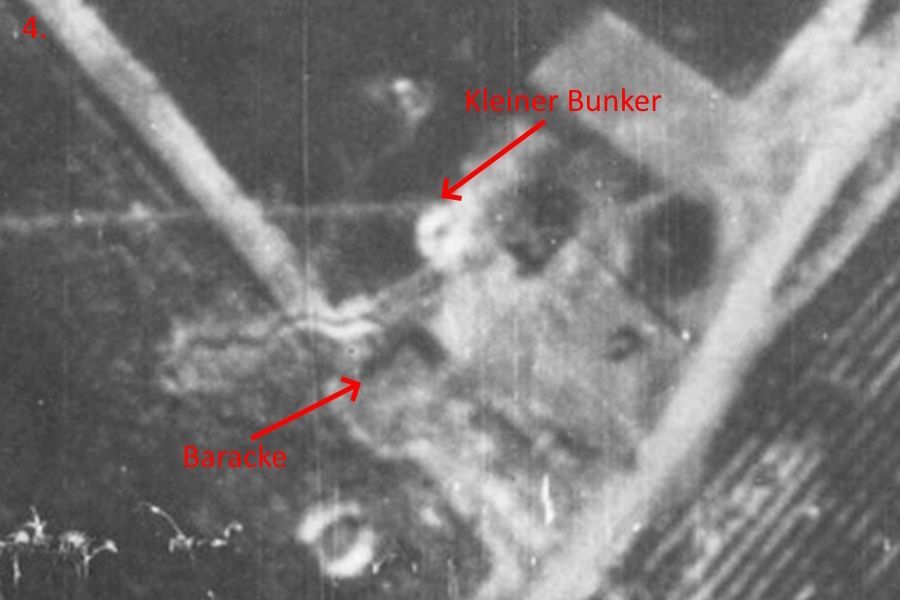

The small control bunker, the ceiling was completely blown away by the force of the explosion.
Object 5.
Ein weiteres interessantes Objekt ist Nr. 5. Es liegt etwas südlich der drei anderen Bettungsfundamente und ist von Form und Bauart komplett anders. In der Mitte befindet sich ein Sockel in Form eines Sechseck von etwa 8 Metern Durchmesser, der über einen festen Zugang von Norden erreichbar ist. An sonsten ist dieser von einem etwa 2 Meter tiefen Graben umgeben. Das gesamte Bauwerk incl. der Grabenböschungen wurde aus Klinkersteinen aufgemauert.
Was auf diesem Sockel einmal gestanden hat oder stehen sollte, ist nicht bekannt. Es wirkt aber so, als ob das Gerät was darauf stand drehbar gewesen sein könnte und ein Teil davon in dem Graben mitschwenkte.
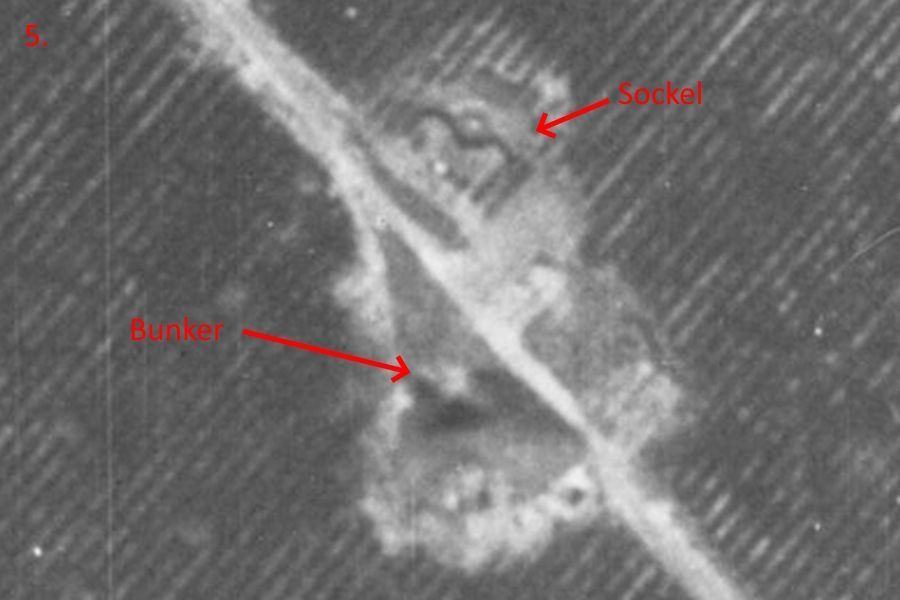
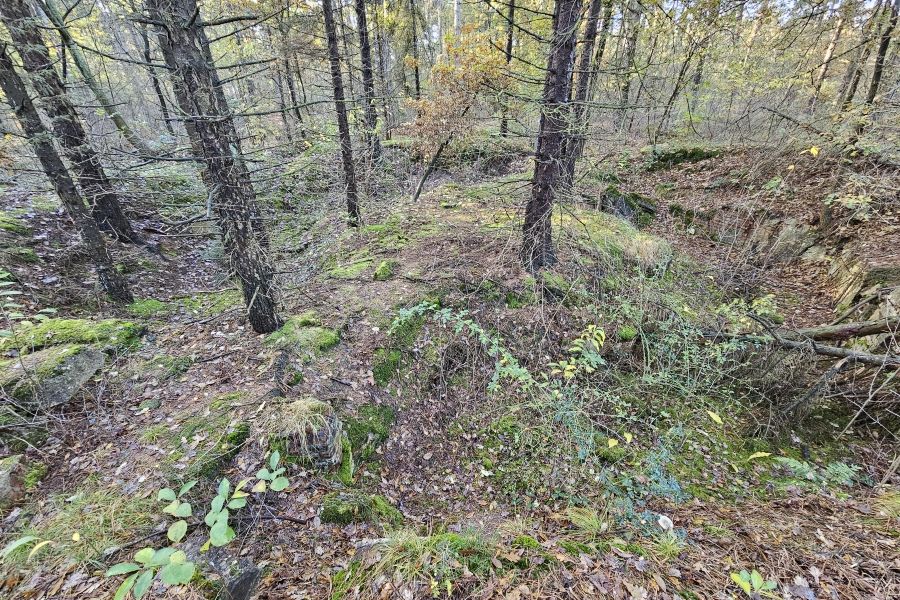

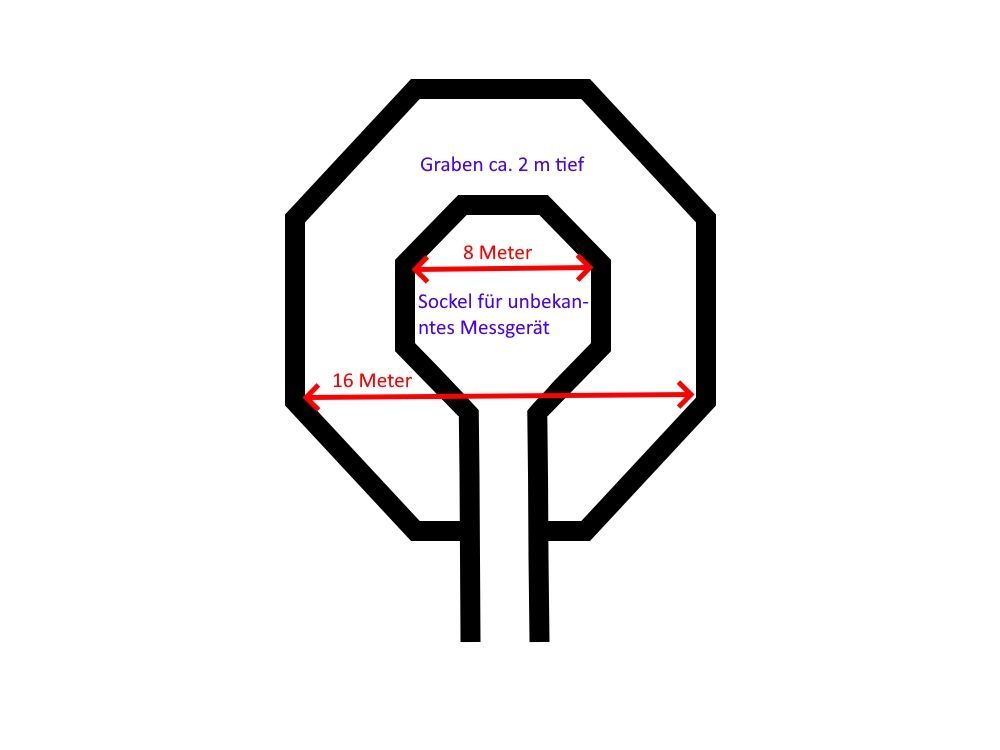
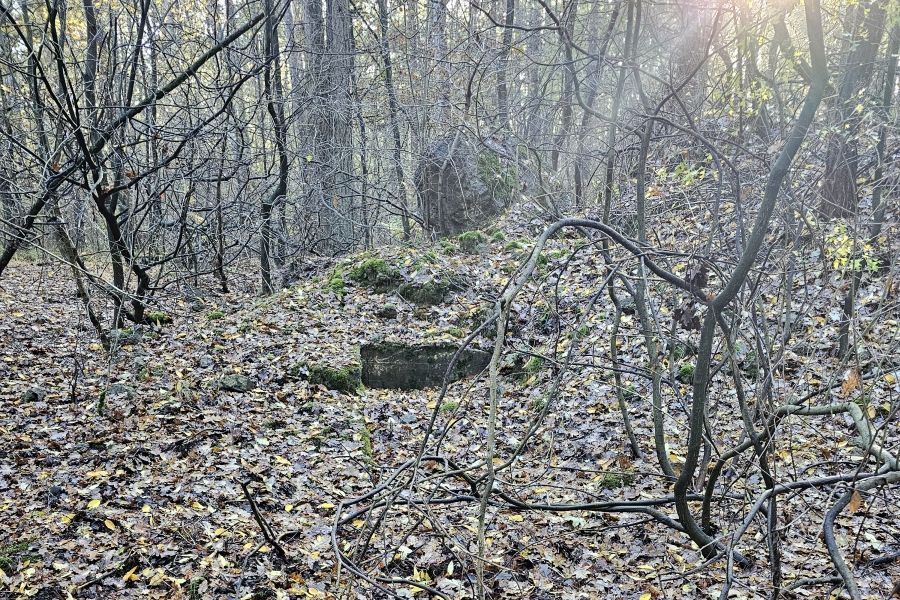
On the opposite side, there is an explosion crater. Enormous chunks of concrete lie around it, indicating the explosive force used. This was probably the ammunition bunker for the entire complex.
Object 6.
These are two blasted concrete foundations; presumably the small command device that was needed for the target values of the anti-aircraft guns once stood here.
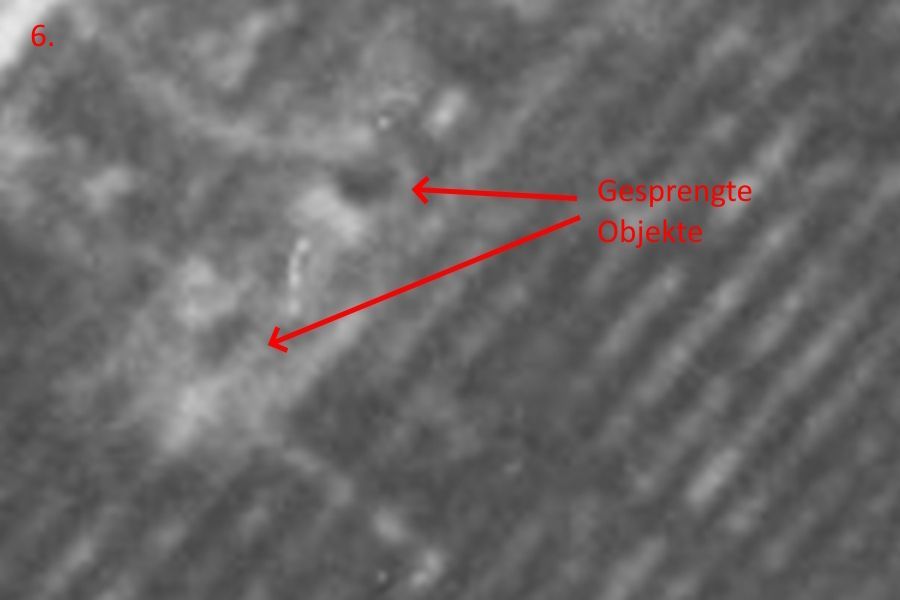
Object 7.
Direkt am Weg stand eine größere Baracke, die ebenfalls vermutlich in die Erde tiefergelegt war, sie verfügte ebenfalls über ein entsprechendes Klinkerfundament. Vermutlich war es die Stabs- und Versorgungsbaracke der Batterie.
